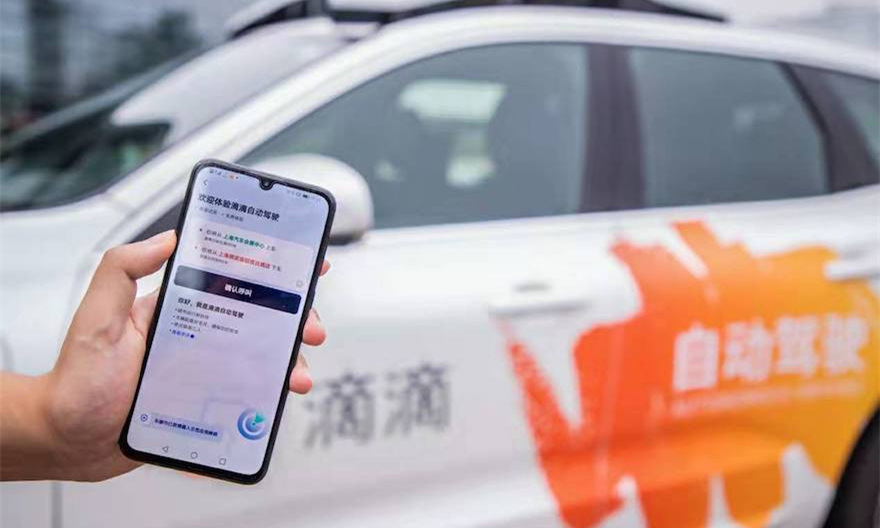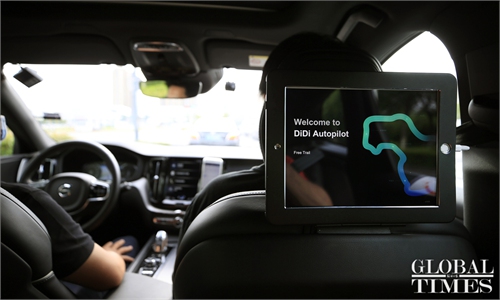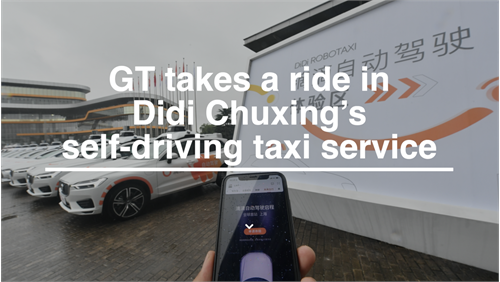
Didi's self-driving car in testing area in Jiading District, Shanghai on June 27, 2020. Photo: Didi Chuxing
People wanting to take a 20-minute ride can register online through the company's APP. The autonomous vehicle drives through the 65-square-kilometer test zone, which includes public roadways.
A Global Times reporter who took a test ride first noticed the car's appearance. On the roof is something called a rotating active laser scanning device, and seven cameras. They give the car a 360-degree view of its surroundings, as opposed to about a 200-degree view experienced by human drivers, said a guide who comes along for the ride, as does a safety officer.
After signing a consent form and scanning a QR code to verify the identity of passengers, the car enters autonomous driving mode.
The route we take includes making turns, passing traffic lights, changing lanes, and, of course, avoiding all obstacles.
Like magic the steering wheel turns automatically. The vehicle pretty smoothly speeds up and slows down according to traffic condition. Its maximum speed is set at 50 kilometers per hour, slower than the 60 kmh speed limit on the pubic test road.
A video screen on the back of the front seat displays the location of nearby vehicles, pedestrians, road conditions, signal lights and the route the car is taking. Passengers can switch to a top-down view as seen by the roof-top cameras, which also eliminate all blind spots.
The vehicle automatically slows down as it passes a zebra crossing, a habit not often followed by human drivers.
The car can determine how much time is remaining for a green light, allowing it to decide if it should go through the intersection or stop and wait for the next green light.
This is achieved with technology called Vehicle-to-everything (V2X), that allows the car to communicate with the traffic control system, the guide told the Global Times. This allows the car to know how long a green light will last, even when its line-of-sight is blocked by a larger vehicle in front.
"Now we are on the bridge. Our sight is blocked and we can't see the road conditions ahead. But the V2X system can detect the traffic conditions and plan the best and safest route," the officer said.
It's exciting to see the technology has gotten this far. The ride felt relatively safe and smooth though the vehicle sometimes brakes hard like new drivers do, and a human is still on standby just in case.
"The autonomous technology is progressing day by day. You'll notice the difference when you come back for another ride in several months," the guide told the Global Times at the end of the trial.
According to Cheng Wei, CEO of Didi Chuxing, it will take at least a decade for autonomous driving to mature. The company plans to operate more than 1 million autopilot vehicles on its platform by 2030.


